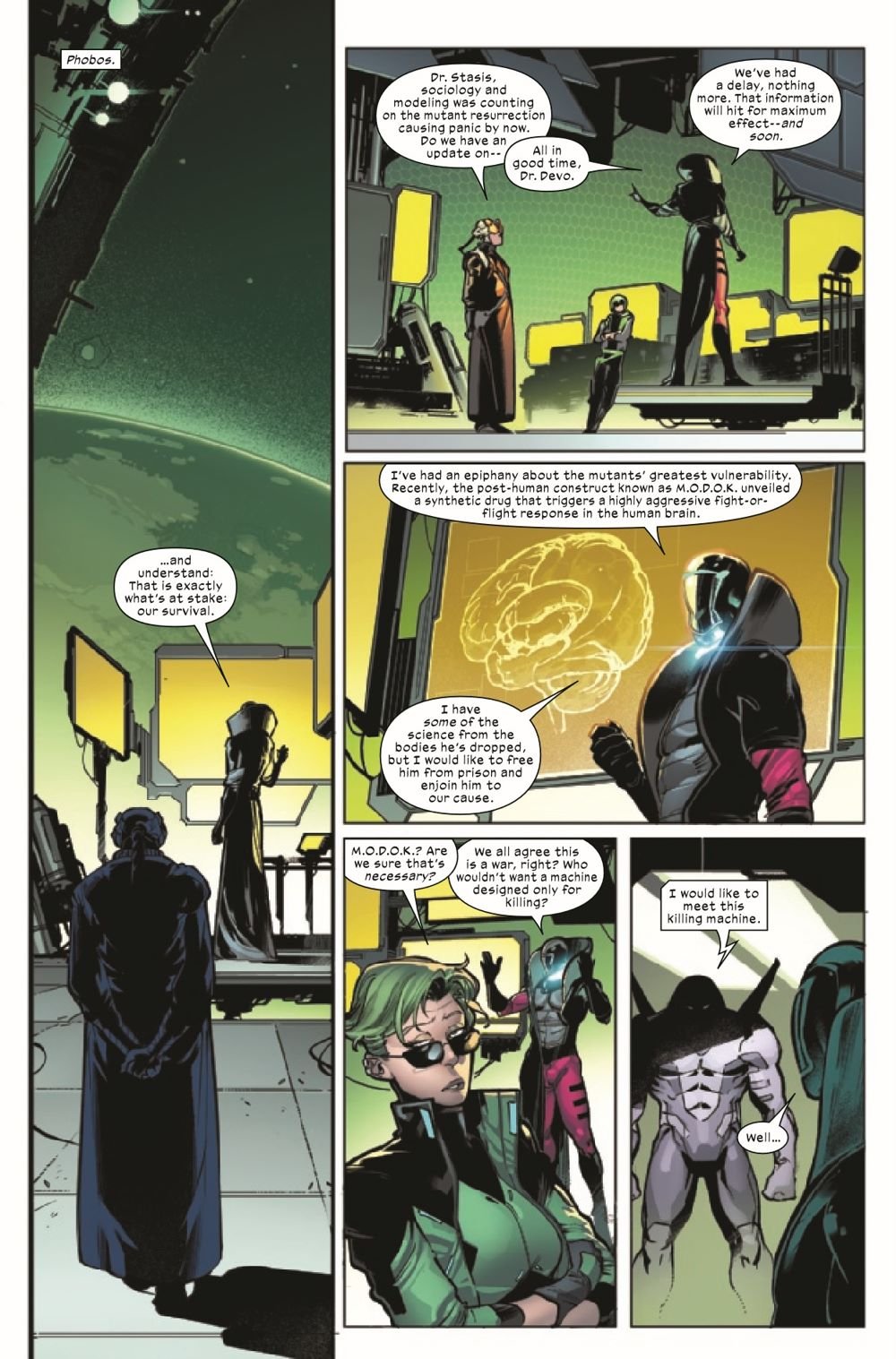X-Men #9
In X-Men #9, Intrigue abounds by writer Gerry Duggan, artist C.F. Villa, colorist Marte Gracia, and letterer Clayton Cowles. This issue has a lot of interesting plots, but the way it is written is so terrible that none of them matter very much.
The mutants and Orchis take votes in Krakoa, Arrako, and Phobos. Orchis decides to spring MODOK, with Dr. Stasis and Nimrod freeing him from custody. Storm and the Arakkii have their own vote on whether or not to attack Phobos. In space, Gambit and Rogue search for clues to the location of Gameworld on Oblitus and find Destiny. The two mutants get into a barroom brawl but are no closer to finding their answer. Later on Arrako, Storm talks to Sunfire, who is building a house there. The two get a sign that Arrako wants them to go on a mission to get the Arakkii Redroot from Otherworld.
As usual in X-Men, this issue’s art is the best part. Villa shines at multiple points throughout this book, especially in the action scenes. The attack by Nimrod is swift and brutal, and it looks great. The big action set between Rogue, Gambit, and some aliens highlights the book’s art and a very entertaining sequence. It has a nice ebb and flow and nicely captures the cliche feel of a bar fight.
Duggan is a strange writer in that he can come up with some good plot lines, but his execution of them is entirely lacking. That’s this issue in a nutshell. Krakoa voting on whether to go to war with Orchis is an exciting development. Still, it’s given barely any time to breathe before readers are moved to Phobos and see Orchis’s vote, which is just sort of there. The fact that they even need MODOK feels weird, especially with how good they’ve been doing with who they have. One of the biggest problems with this issue is that it all just feels poorly written beyond the plotting stage. There are some pretty good ideas here, but its execution is lacking. It’s not what’s written but the way it’s written. It’s also weird that now Duggan decides to start pulling in all kinds of plots involving Krakoa and Arakko. This book has often felt divorced from the events of the others, and having this one tie into them in such a lackluster fashion doesn’t do the book any favors.
X-Men has long been a book where it feels like it would be better if anyone but Duggan was writing it, and this issue puts that on full display. For example, as great looking and choreographed as the bar fight on Oblitus is, the whole thing is such a cliche and played for laughs in so many ways that it barely works. It doesn’t do anything for any of the characters involved; sure, readers might not know that Destiny hates Gambit, but it should be pretty obvious, and the way Duggan plays everything for laughs in this scene just feels hollow. The issue also feels long-winded in the worst possible ways. The disparate plot threads of this issue don’t need anywhere near this dialogue and render even the important scenes kind of boring. The last couple of pages with Storm and Sunfire are great, so there’s that.
X-Men #9 is another example of the multitude of problems this book has. Duggan just isn’t the right fit for this comic at all; he can come up with some good ideas, but his execution of them is frequently bad. As always, the art saves this book from being downright abysmal, with Villa especially shining in the action scenes. It’s hard to be disappointed in this comic anymore; it’s so mediocre that reading just sort of renders one numb.







